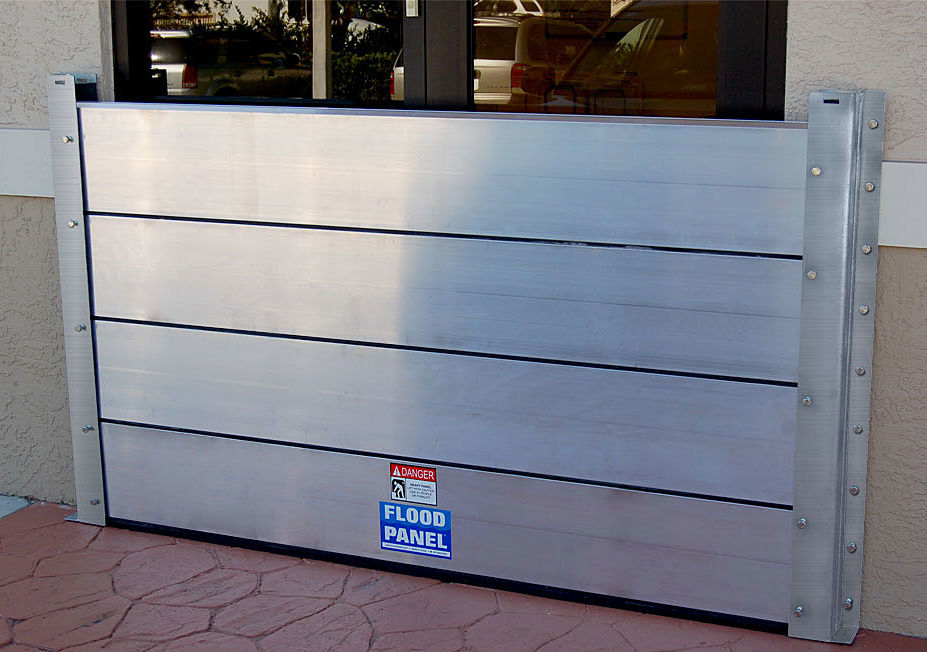Floodproofing
Install Dry Floodproofing: Flood Shields
What Is It?

Flood Panel
Dry floodproofing techniques can be used to make a structure watertight below flood elevation. Flood shields, also known as flood panels or flood shield barriers, are temporary, watertight barriers erected in front of building openings (e.g. doors, windows, garages) prior to flood events. Flood shields are constructed from aluminum, stainless steel, or plastic and use neoprene rubber or similar materials to seal the barrier. Flood shield mounts are typically installed around all building opening externally, though inside mounts are possible. The shields are then put in place in preparation for potential flooding or after flood warnings are issued. Installation time varies between models. Most flood shields are able to effectively protect buildings from floods of 1-2 feet.
Benefits
- Cheaper than passive flood barriers and easily installed on existing buildings
- Applied to the building itself and does not require additional land (for floodwalls or levees)
- Easily combined with other dry floodproofing measures for maximum protection
Drawbacks
- Deployment of flood shields requires human intervention and sufficient installation time for larger buildings. Without adequate warning, flooding can occur before shields can be put in place
- Flood shields do not protect structures from high-velocity flood flows and wave action. Most models do not provide protection for floods deeper than 2 feet.
- Dry floodproofing measures cannot alone be used to bring substantially damaged or substantially improved residential structures into compliance with floodplain management ordinances and laws
Regulatory Impacts and Requirements
Potential regulatory touchpoints in Boston and Massachusetts include:
- Inspectional Service Department
- Building Code/Permit
- Fire Department
- Flood shields installed over all entrances and exits to a building may cause concern over building egress from the fire or inspectional services departments.
Financing Options, Incentives, and Rebates
- FEMA Hazard Mitigation Assistance: FEMA provides funding for flood and disaster mitigation through three grant programs: Hazard Mitigation Grant Program, Pre-Disaster Mitigation, and Flood Mitigation Assistance. Additional information and application instructions are available here through the Massachusetts Emergency Management Agency. Only non-residential dry floodproofing projects are eligible.
- Hazard Mitigation Funding Under Section 406 of the Stafford Act: Local, state, tribal, and some non-profit facilities damaged by disasters may use Section 406 funding to restore damaged facilities, as well as undertake preventative measures for future flood mitigation.
News
- “Vancouver Weighs Options for Flood Resilience,” Next City, November 2016
- “City Promotes West Chelsea Preparedness,” Chelsea Now, May 2016
Resources
- FEMA: Chapter 7: Dry Floodproofing from Selecting Appropriate Mitigation Measures for Floodprone Structures
- ClimateTechWiki: Flood-proofing
Project Examples
A sample of providers
- Flood Panel
- Zero International: Flood Barrier Shield
- Flood Shield


